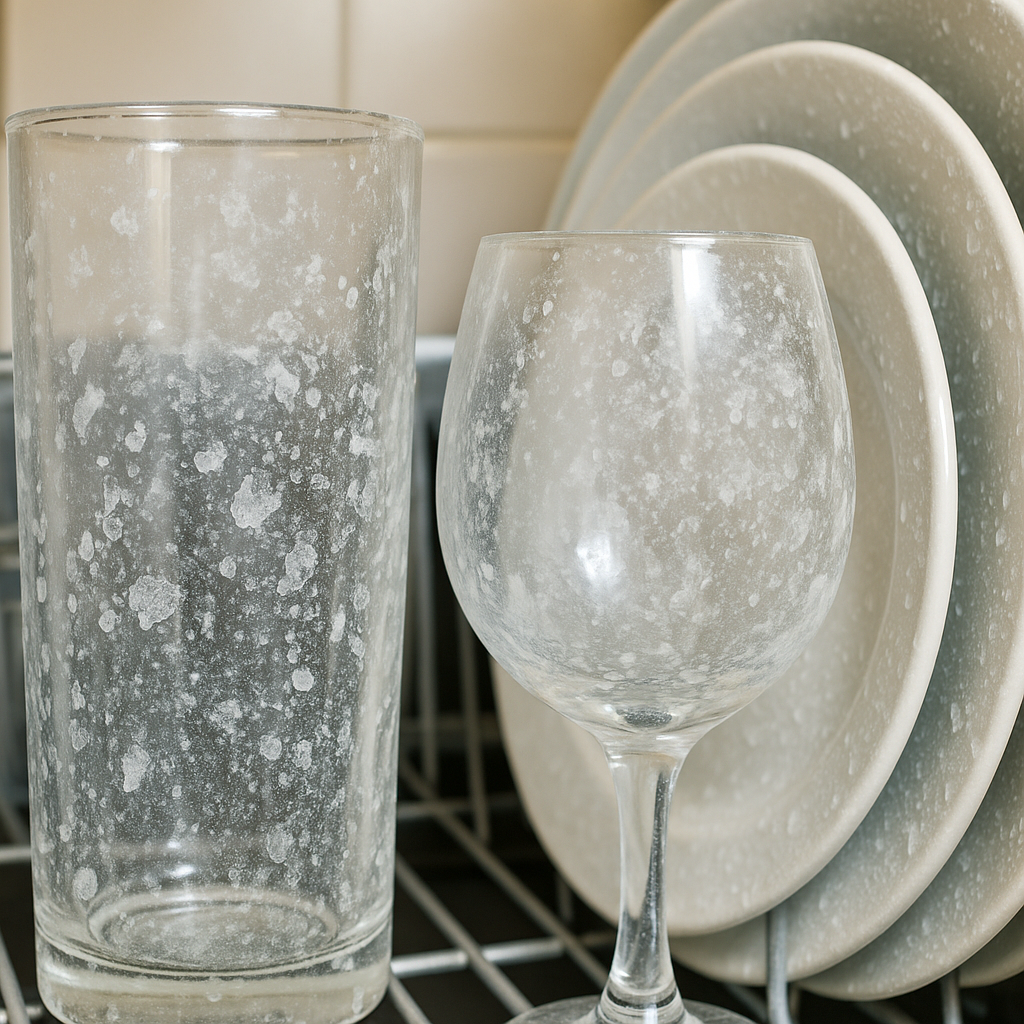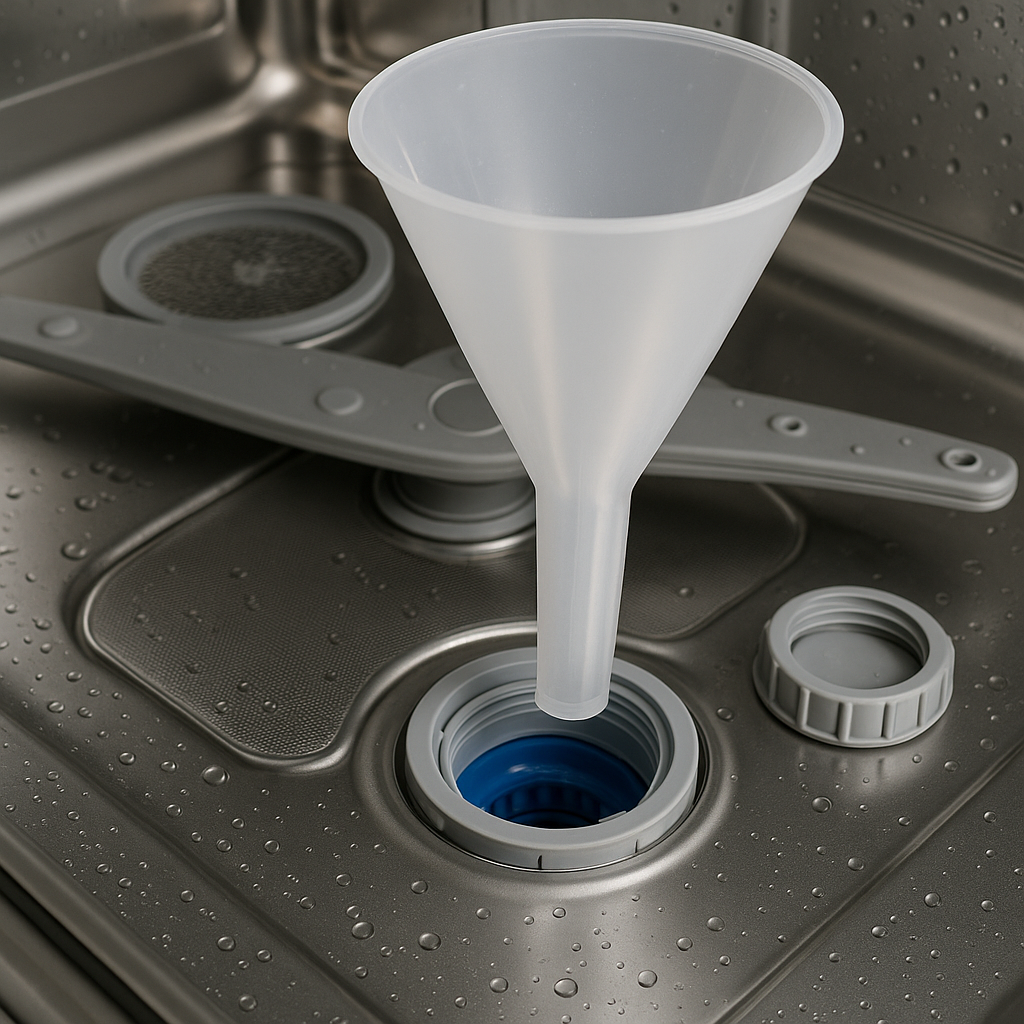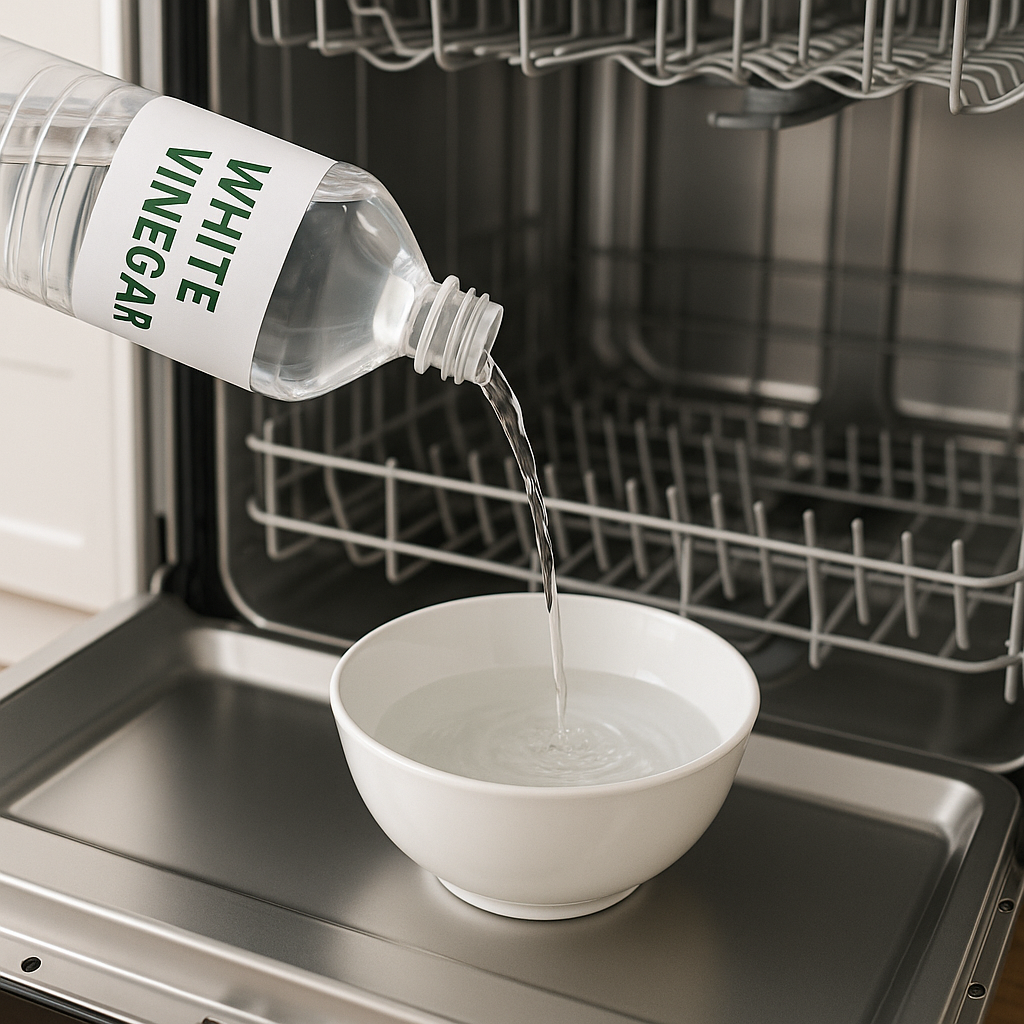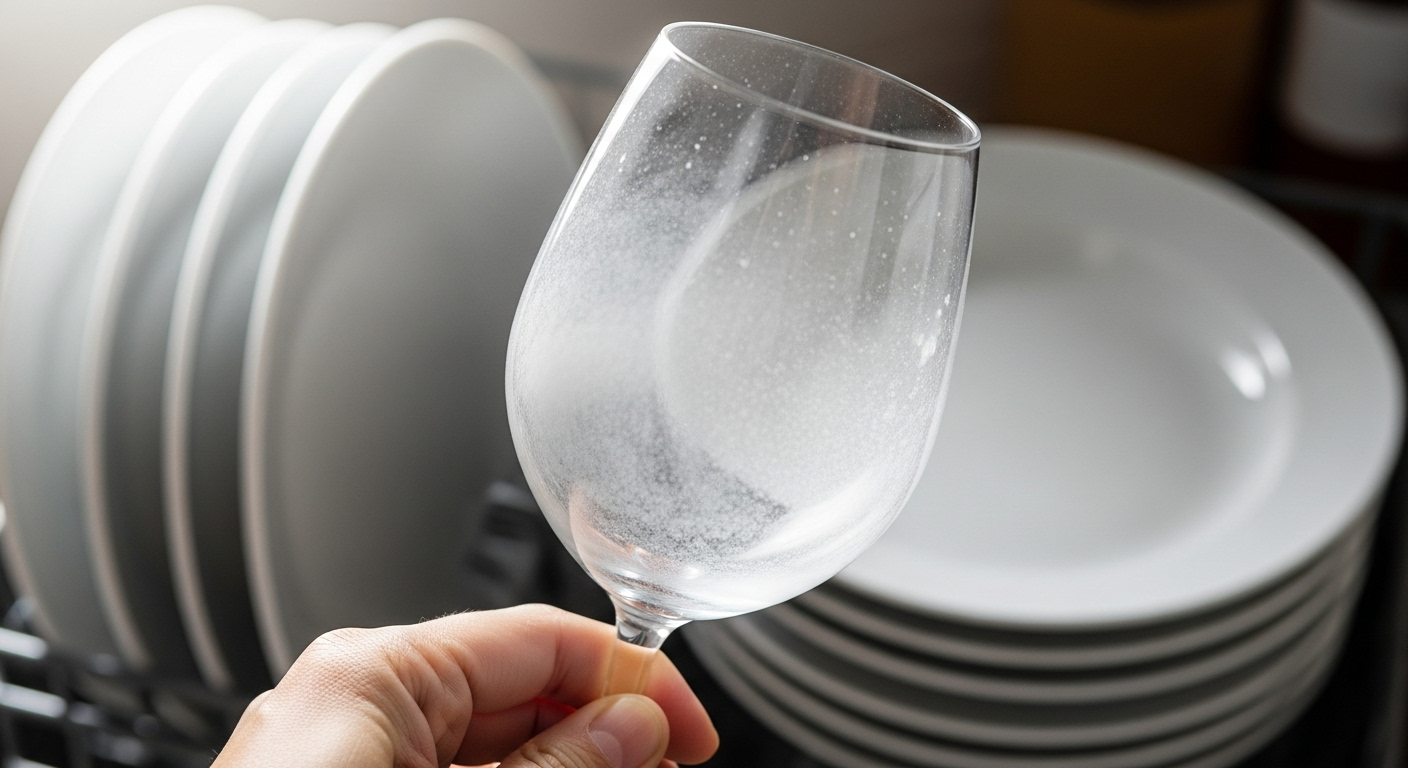That chalky white film and those frustrating spots on your supposedly clean dishes are one of the most common dishwasher complaints we hear. The good news? It's almost certainly not your dishwasher packing up, and it's definitely fixable. The culprits are usually mineral deposits from hard water, detergent residue, or a combination of both working together to make your glassware look decidedly less than sparkly.

The Science Behind the White Residue
Hard water is the primary villain in this story. If you live in areas like London, the South East, or parts of the Midlands, you're likely dealing with water containing high levels of calcium and magnesium minerals. When your dishwasher heats this water during the wash cycle, these minerals don't simply disappear – they get concentrated as the water evaporates, leaving behind that telltale white residue on your dishes.
The situation becomes more complicated when modern dishwasher detergents enter the picture. Since 2010, phosphates were removed from dishwasher detergents for environmental reasons. While this was brilliant for our waterways, phosphates had previously helped prevent mineral deposits from sticking to dishes. Without them, we're more likely to see that white film, particularly on glassware and plastic items.
Temperature plays a crucial role too. Your dishwasher's main wash cycle runs at 51-60°C, with the rinse phase reaching around 80°C. These temperatures are necessary for effective cleaning and sanitisation, but they also accelerate mineral deposit formation. It's a bit of a catch-22 – you need the heat for cleanliness, but the heat contributes to the residue problem.
Identifying the Type of White Residue
Not all white residue is created equal, and identifying what you're dealing with will help determine the best solution:
Hard water minerals appear as a powdery, chalky film that's difficult to wipe off with just your finger. If you can remove it easily with a small amount of vinegar, you're dealing with mineral deposits.
Detergent residue tends to be more filmy and can often be wiped away with a damp cloth. This usually indicates you're using too much detergent or your dishwasher isn't rinsing properly.
Salt residue from the dishwasher's water softener system can occur if the salt compartment is overfilled. This typically wipes off easily with your finger and leaves a slightly gritty feel.
The Most Effective Solutions
Use Rinse Aid (The Quick Win)

Add Dishwasher Salt for Long-term Prevention

If your dishwasher has a built-in water softener system (most do), keeping the salt compartment topped up is essential for preventing white residue. Dishwasher salt helps the internal water softener remove calcium and magnesium from the water before it reaches your dishes.
You'll need to adjust your dishwasher's water hardness setting according to your local water supply. Contact your water company for hardness information, or use test strips available online. Most dishwashers have settings from L0 (soft water) to L5 (very hard water).
Clean Your Dishwasher with Vinegar

A monthly vinegar clean can work wonders for removing existing mineral buildup and preventing future problems. Place two cups of white vinegar in a dishwasher-safe bowl on the top rack of your empty dishwasher and run a hot cycle. The acetic acid in vinegar dissolves mineral deposits throughout the dishwasher's interior and spray arms.
However, use vinegar sparingly – no more than once monthly. The acid can potentially damage rubber seals and metal components if used excessively. Some dishwasher manufacturers specifically advise against regular vinegar use, so check your manual first.
Alternative cleaning method: Citric acid powder (available from supermarkets and online retailers) can be more effective than vinegar for heavy mineral buildup. Use 2-3 tablespoons in the detergent dispenser and run a hot cycle. Citric acid is gentler on your dishwasher's components and leaves a pleasant citrus scent rather than the vinegar smell.
Optimising Your Dishwasher Routine
Check Your Water Temperature
Your dishwasher needs water at 50-60°C to dissolve detergent properly and achieve effective cleaning. If your water isn't hot enough, detergent won't dissolve completely, leading to residue buildup. Run your kitchen tap until it's hot before starting the dishwasher to ensure it starts with appropriately heated water.
Reduce Detergent Dosage
Counterintuitively, using too much detergent often makes residue problems worse. Modern detergents are highly concentrated, and excess soap that doesn't get rinsed away will dry onto your dishes as white film. If you're using tablets, consider switching to powder for better dose control, particularly if you have a small dishwasher.
Load Your Dishwasher Properly
Poor loading can contribute to residue problems by preventing proper water circulation. Ensure spray arms can rotate freely and water can reach all surfaces. Plastic items should go on the top rack where temperatures are lower, as they tend to trap more water and detergent than glass or ceramic items.
Don't overcrowd racks – dishes need space for water and detergent to circulate effectively. Face soiled surfaces toward the spray arms, and ensure tall items don't block the upper spray arm.
When to Consider Professional Solutions
If you've tried the above solutions and still experience persistent white residue, you might need to consider more significant interventions:
Whole-house water softener: For properties with very hard water, installing a water softener system can eliminate the problem at source. While this involves higher upfront costs (typically £500-£1500), it benefits all your appliances and can reduce energy bills by preventing limescale buildup.
Professional dishwasher cleaning: If mineral buildup has become severe, professional cleaning services can descale your dishwasher's internal components more thoroughly than home remedies allow.
Dishwasher replacement: Very old dishwashers may lack effective water softening systems. If your machine is over 10 years old and nothing else works, upgrading to a modern model with better mineral management might be the most cost-effective long-term solution.
Preventing Future Problems
Regular maintenance is key to preventing white residue from becoming a persistent problem:
Weekly: Check and clean the dishwasher filter to prevent food particles from interfering with proper drainage and rinsing.
Monthly: Run a cleaning cycle with dishwasher cleaner, citric acid, or vinegar to remove mineral buildup before it becomes problematic.
Every three months: Deep clean spray arms by removing them and soaking in warm water with a mild detergent solution.
Remember, dealing with white residue isn't about finding the most expensive solution – it's about understanding the science behind the problem and applying the right combination of products and techniques for your specific water conditions. Most households can solve this issue with simple adjustments costing less than £10 in total.
